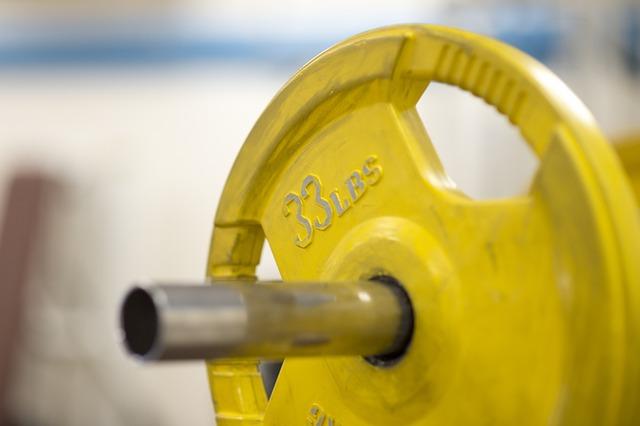In the realm of fitness, the debate between strength training and cardio often leaves enthusiasts and beginners alike at a crossroads. Which should take precedence? Can they be effectively combined? The truth is, integrating both strength training and cardiovascular exercise into your routine can unlock unparalleled results, fostering a well-rounded, resilient, and dynamic physique. In this comprehensive guide, we will delve into the science and strategy behind merging these two pivotal forms of exercise. By understanding how to balance and optimize your workouts, you can achieve maximum results, whether your goal is to build muscle, enhance endurance, or improve overall health. Prepare to elevate your fitness regimen with a holistic approach that harnesses the power of both strength and cardio.
Understanding the Synergy Between Strength Training and Cardio
Incorporating both strength training and cardio into your fitness routine can create a powerful synergy that maximizes your overall results. Strength training builds muscle mass, increases metabolic rate, and enhances bone density. On the other hand, cardio exercises improve cardiovascular health, aid in fat loss, and boost endurance. When combined, these two forms of exercise complement each other, leading to a well-rounded and efficient workout regimen.
To effectively combine these elements, consider the following strategies:
- Alternate Days: Dedicate specific days to strength training and others to cardio. This approach allows your muscles to recover while still maintaining cardiovascular health.
- Integrated Workouts: Incorporate both types of exercise into a single session. For instance, perform a strength exercise followed by a short burst of cardio, such as jumping jacks or sprints.
- Weekly Balance: Aim for a balanced weekly schedule that includes 2-3 days of strength training and 3-4 days of cardio. This ensures that neither aspect is neglected.
By thoughtfully combining strength and cardio training, you can achieve a harmonious balance that optimizes your fitness results.

Creating a Balanced Workout Schedule for Optimal Performance
To achieve optimal performance, a balanced workout schedule should include both strength training and cardio. Each plays a unique role in your fitness journey. Strength training, which focuses on building muscle mass and increasing overall strength, is essential for boosting your metabolism and improving your body composition. Incorporate exercises like:
- Weight lifting (e.g., squats, deadlifts, bench press)
- Bodyweight exercises (e.g., push-ups, pull-ups, planks)
- Resistance band workouts
On the other hand, cardio workouts are crucial for enhancing cardiovascular health, burning calories, and increasing endurance. Aim to include various forms of cardio such as:
- High-Intensity Interval Training (HIIT)
- Steady-state cardio (e.g., running, cycling, swimming)
- Low-impact options (e.g., brisk walking, elliptical)
A balanced schedule might look like alternating days of strength training and cardio, allowing for adequate rest and recovery. For example, you could perform strength training on Monday, Wednesday, and Friday, while dedicating Tuesday, Thursday, and Saturday to cardio. This approach ensures that your body gets the benefits of both training styles without overtraining.

Incorporating HIIT to Maximize Cardio and Strength Gains
High-Intensity Interval Training (HIIT) is a powerhouse when it comes to optimizing both cardiovascular fitness and muscular strength. By alternating between short bursts of intense activity and periods of rest or lower-intensity exercise, HIIT workouts not only torch calories but also build muscle more efficiently than steady-state cardio. Here’s how you can incorporate HIIT into your routine for maximum benefits:
- Combine Movements: Include exercises that target multiple muscle groups simultaneously, such as burpees, kettlebell swings, and jump squats. This dual-action approach maximizes both cardio and strength gains.
- Time Intervals: Structure your workouts with intervals of 20-30 seconds of high-intensity exercise followed by 10-15 seconds of rest. This ratio keeps your heart rate elevated while allowing for brief recovery.
- Variety and Progression: Mix up your routine with different exercises and gradually increase the intensity or duration. For example, start with 30-second sprints followed by 15 seconds of rest and progressively shorten the rest periods or increase the sprint duration.
Integrating HIIT into your fitness regimen not only saves time but also delivers comprehensive results, making it an essential strategy for anyone looking to enhance both their cardiovascular health and muscle strength.

Nutrition and Recovery Strategies for Combined Workouts
Proper nutrition and strategic recovery are essential for optimizing the results of your combined strength training and cardio regimen. To fuel your workouts and expedite recovery, consider incorporating the following strategies:
- Balanced Diet: Ensure your meals contain a mix of macronutrients. Include lean proteins, complex carbohydrates, and healthy fats to sustain energy levels and repair muscle tissue.
- Hydration: Drink plenty of water throughout the day. Proper hydration aids in muscle function and helps flush out toxins that can accumulate during intense exercise.
- Post-Workout Nutrition: Consume a protein-rich snack or meal within 30 minutes after your workout to kickstart muscle recovery. Combining protein with carbs can replenish glycogen stores and enhance muscle repair.
- Rest and Sleep: Prioritize quality sleep and rest days to allow your body to recover. Adequate sleep is crucial for muscle repair, hormone regulation, and overall performance.
- Supplements: Consider supplements like BCAAs, omega-3 fatty acids, and vitamins to support recovery and reduce inflammation.
Implementing these strategies will help you maximize the benefits of your combined workouts, ensuring you build strength while improving cardiovascular health.





